National parks are more popular – and crowded – than ever. But there are thousands of unique state parks across the country just waiting for you to visit.
How do you choose which ones to see first?
We’ve gathered some of the most unique state parks for you to check out. Maybe you’ll even find some in your home state.
Here we go!
The History of State Parks
States establish state parks to protect a beautiful, historic location. They’re not just in the US either. In fact, any country that calls their regions ‘states’ has state parks.
Many US state parks got their start in the 1930s. The country developed 800 state parks via federal programs like the Civilian Conservation Corps and Works Progres Administration during this time.
There are currently more than 10,000 state parks in the USA. If you want to visit the most state parks in one state, you’ll need to plan a long trip through California. According to playgroundequipment.com, the coastal state has 270 state parks.
But today, we’re talking about some of the more unique state parks. So let’s get on with our list, in order by state.
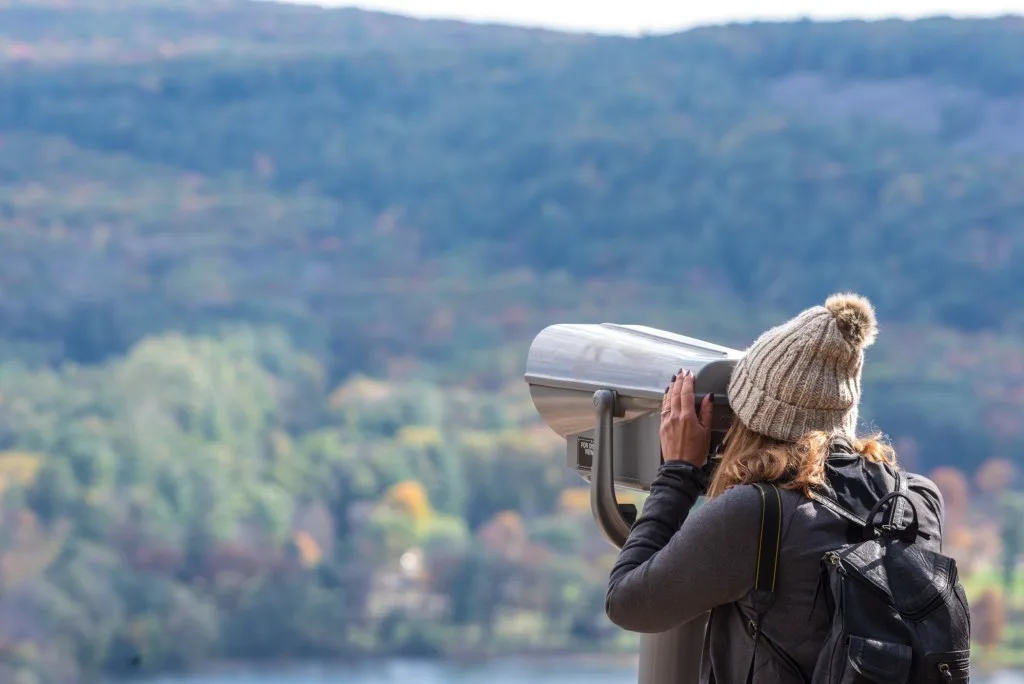
#1 Kachemak Bay State Park – Homer, Alaska
About the Park: Kachemak Bay became Alaska’s first state park in 1970. It’s 400,000 acres of mountains, glaciers, forests, and beaches. It boasts a variety of land, sea, and air wildlife. Keep an eye out for harbor seals, whales, wolves, moose, bald eagles, and puffins.
Visitors can extend their stay in cabins, tent campsites, or yurts. None of the accommodations have electricity. Campers have access to fire rings, picnic tables, toilets, and bear-resistant caches.
What Makes It Unique: Grewingk Glacier is a 13-mile glacier in the Kenai Mountains. Trails and views of a picturesque iceberg-filled lake surround the glacier. Anyone above the timberline will see glaciers and snowfields stretching for miles. The other glaciers in the park are the Southern, Doroshin, Wosnesenski, Portlock, Dixon, Dinglestadt, and Chernof Glaciers.
How to Get There: Another unique aspect is that there are no roads to Kachemak Bay State Park. The only way to get there is to take a boat or plane from Homer. Options include air and water taxi services and charter boats.
#2 Slide Rock State Park – Sedona, Arizona
About the Park: It started as an apple orchard owned by Frank L Pendley. In 1933 Pendley built rustic cabins on the 43-acre apple farm for vacationers to extend their stay. Pendley Homestead became a state park in 1987.
Slide Rock State Park has a few short trails and walking paths. Most of them lead visitors to the old homestead house, barns, original apple orchard, and historic cabins. The park is strictly for day use, with picnic areas and an epic swimming area. There are no overnight accommodations.
What Makes It Unique: The sliding rock! It’s an 80 foot long and 2.5 to 4-foot wide natural chute eroded into the surrounding red sandstone. The algae that grow on the stone make it very slippery. The slide is in Oak Creek and surrounded by red canyon walls.
How to Get There: You can drive yourself, but park officials prefer you carpool. The park is top-rated, and parking is limited.
6871 AZ-89A, Sedona, AZ 86336
GPS: 34.95589065551758, -111.75469970703125
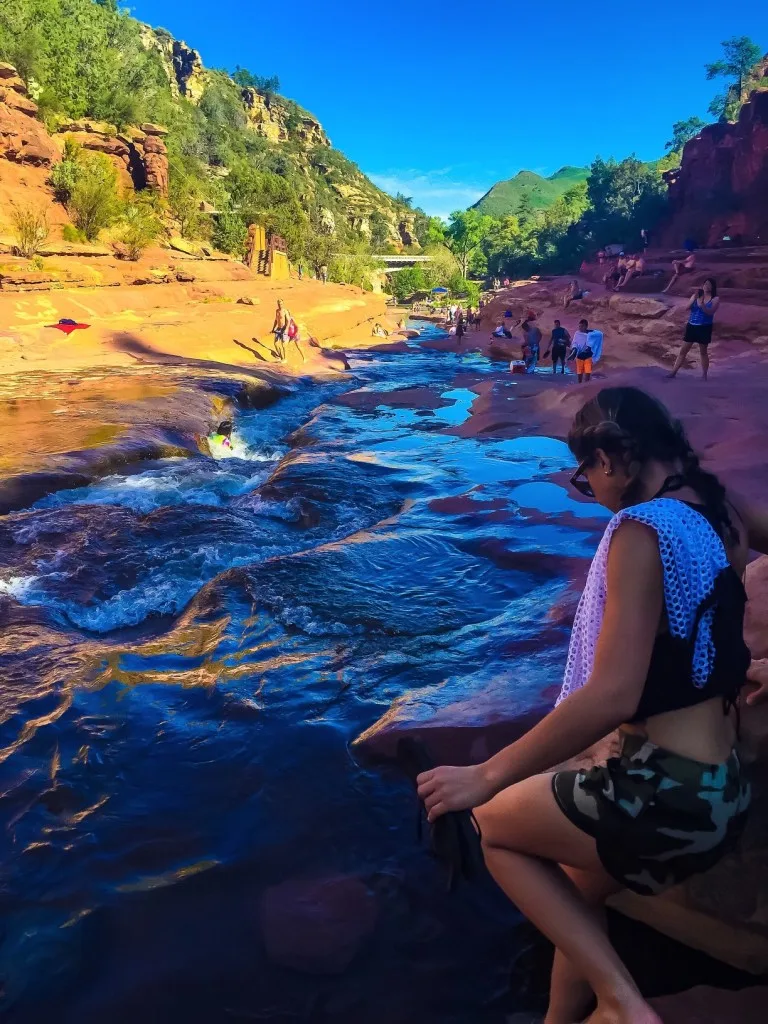
#3 Julia Pfeiffer Burns State Park – Big Sur, California
About the Park: This 4 square mile park is named after Julia Pfeiffer Burns, an esteemed pioneer woman in Big Sur country. The park follows the Big Sur coastline and has redwoods, tan oaks, and three perennial creeks, including McWay Creek.
There are two environmental campsites, both hike-in only and require reservations. Sites have picnic tables, fire rings, trash cans, and pit toilets. Water and restrooms are available across the street.
What Makes It Unique: A waterfall that flows straight into the ocean at this state park. McWay Creek makes its way through the park and ends in the spectacular 80-foot McWay Falls. Water pours over the cliff edge, onto the beach, and then into the waters of Monterrey Bay National Marine Sanctuary.
How to Get There: You can drive along Highway 1 until you reach mile marker 36. The park is 37 miles south of Carmel.
GPS: 36.15891906587872, -121.67044173715296
#4 Anza-Borrego Desert State Park – Borrego Springs, California
About the Park: With 500 miles of dirt roads, trails galore, and 12 wilderness areas, Anza-Borrego Desert State Park is the largest state park in California. The park received its name from the Spanish explorer Juan Bautista de Anza and the Spanish name for bighorn sheep.
Park explorers can continue to enjoy the horse riding, biking, and hiking trails for the day or longer. The park has camping opportunities for families, groups, backcountry, and RVs. Not all campsites have utilities, but some RV sites have full hookups. If you stay overnight, make sure you look at the night sky. This is a Dark Sky Park and an excellent place for stargazing.
What Makes It Unique: Artist Ricardo Breceda created and installed 130+ life-sized metal sculptures throughout the park. So when you visit, hop in the car and search the desert landscape for them. Some are right off the road, but others are harder to find. Keep a lookout for a dragon, mammoth, a group of horses, multiple T-rex, and so much more!
How to Get There: You can drive. Using a navigation app, enter the address for Anza Borrego Desert State Park Visitor Center. Otherwise, you’ll get sent to a 4-wheel-drive dirt road. Grab a paper map of the sculptures at the visitor center, water, and maybe a picnic lunch, then head out to explore.
200 Palm Canyon Drive, Borrego Springs, CA 92004
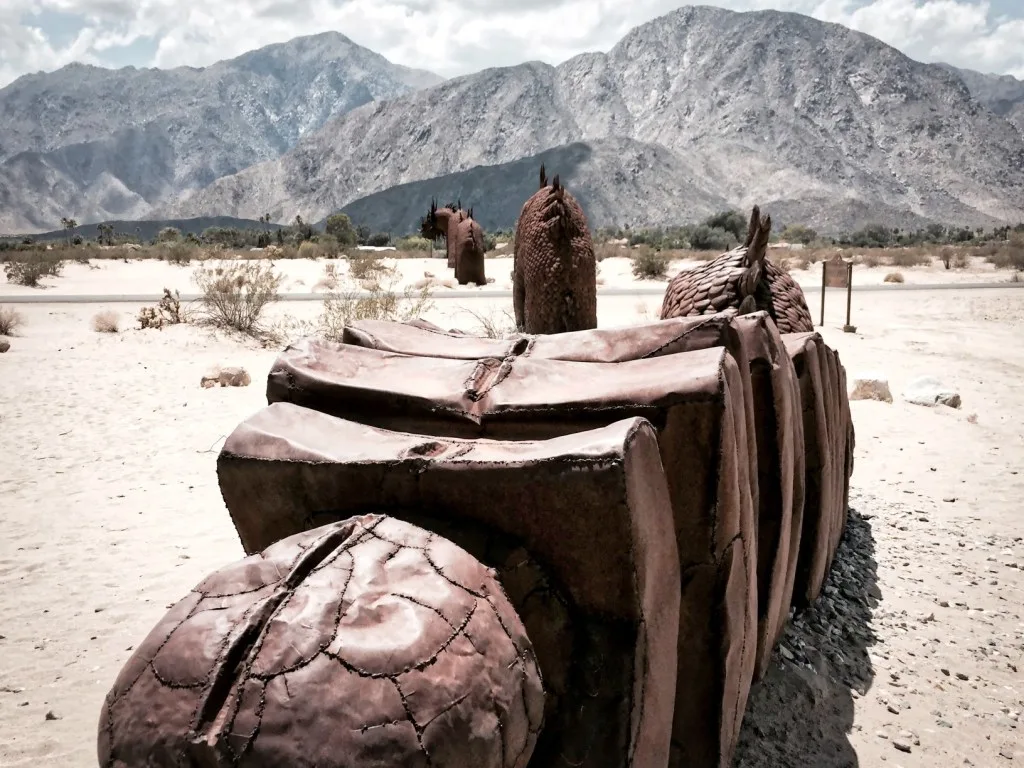
#5 Emerald Bay State Park – Lake Tahoe, California
About the Park: Whether you want to hike, swim, kayak, scuba, boat, or go sightseeing, the very unique Emerald Bay State Park has it! Its location allows you to look out onto Emerald Bay and see the surrounding forested mountains and Lake Tahoe.
There are two different ways to camp here. At Eagle Point Campground, you can camp with an RV or tent, but there are no hookups. Each site has a bear-resistant food locker, table, and firepit. Showers and restrooms are just a short walk away. The second camping option is the Emerald Bay Boat Camp, accessible only by boat or foot. It’s a primitive campground.
What Makes It Unique: In the late 1920s, Mrs. Lora Josephine Knight purchased land on Emerald Bay. She then had 200 workers build Vikingsholm. They built the mansion using construction methods from as far back as the 11th century. Inside the decor is a collection of original and replica antiques. Visitors can hike down to the home and tour it.
How to Get There: You can drive to the park, located 22 miles south of Tahoe City. A 1-mile steep trail is the only way to reach Vikingsholm.
138 Emerald Bay Rd, South Lake Tahoe, CA 96150
#6 Gamble Rogers State Park – Flagler Beach, Florida
About the Park: Gamble Rogers is a 145-acre state park between the Atlantic Ocean and Intracoastal Waterway. The state named the park after the late Florida folk singer and storyteller. Visitors can enjoy cycling, hiking, shelling, birding, paddling, swimming, and picnicking.
Anyone who wants to extend their stay can stay in the onsite campground. Half of the campsites are on the beachside, and the other half are riverside. All sites have water, electricity, a picnic table, and a fire ring. There is an onsite bathhouse and dump station.
What Makes It Unique: There’s a butterfly garden! It’s a leisurely stroll through native blooming plants and, of course, butterflies! Enjoy fluttering Monarchs, Common buckeye, and other pollinators like bees, insects, and birds.
How to Get There: You can drive! The park is 18 miles north of Daytona Beach and 30 miles south of St. Augustine along A1A.
3100 S. Oceanshore Blvd., Flagler Beach FL 32136
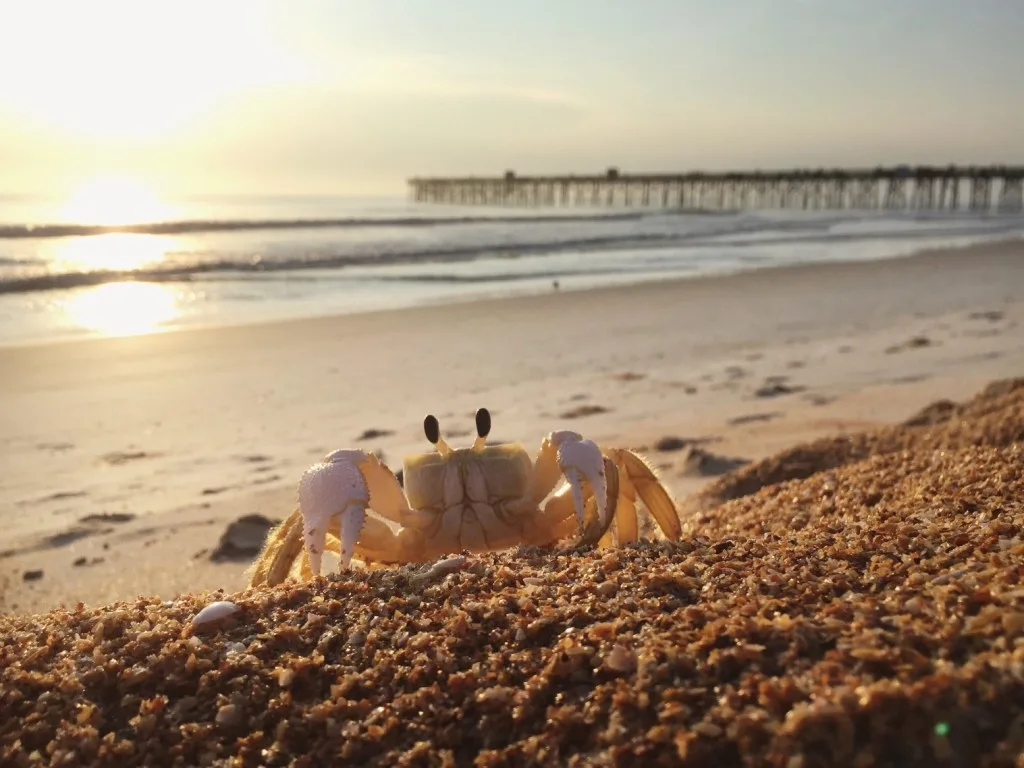
#7 Nāpali Coast State Wilderness Park – Kapaa, Hawaii
About the Park: This remote Hawaii wilderness park is a place to unplug completely. The park is full of rugged deep cliffs and valleys that end at the sea. And, let’s not forget the waterfalls and sea caves. Visitors can enjoy extensive hiking and breathtaking views.
Tent camping is available along the Kalalau Trail at designated locations. There are zero amenities or utilities, but the park provides composting toilets. Stream water is the only fresh water.
What Makes It Unique: The entire state park has historic features dotted with Hawaiian heritage sites. While hiking and exploring, look out for irrigation ditches, terraced fields, house platforms, temples, shrines, and graves of Hawaiians that used to live here.
How to Get There: You can get there by land, air, or sea! The park is 41 miles from Lihue Airport. You can grab a cab bus or rent a car from there. Some areas of the park are only accessible via boat or kayak.
If driving in, you have to go through Hāʻena State Park: 6CC9+8R Wainiha, Hawaii, Kapaʻa, HI 96746.
#8 Dead Horse Point State Park – Moab, Utah
About the Park: Legend has it that 19th-century cowboys regularly used a natural corral to keep horses. The cowboys once left the horses in the corral without water or anything, and they died. And this is where the park gets its name. Dead Horse Point State Park opened to the public in 1959 and is known for its desert landscape, canyons, and high desert woodland.
The park has two campgrounds, 52 campsites, and four yurts. There are tent and RV sites with fire pits, picnic tables, and electricity. Fresh water and a dump station are available.
What Makes It Unique: Dead Horse is 2000 feet above the Colorado River with epic views of Canyonland National Park. Visitors can see all the beautiful red columns of rocks and a smaller version of the grand canyon.
How to Get There: It’s a gorgeous drive 32 miles from Moab on UT-313.
GPS: 38°29’16.0″N 109°44’09.4″W

#9 Big Bone Lick State Historic Site – Union, Kentucky
About the Park: Big Bone Lick gets its name from salty natural springs. Admission to the park and visitor center is free for everyone! Once inside, go on a hike, take a swim, or play mini-golf or tennis.
Visitors can extend their stay in an RV or tent. There are 62 campsites with utilities, grills, bathhouse, laundry, and on-site dump station.
What Makes It Unique: This state park is the birthplace of American vertebrae paleontology. In 1807 William Clark conducted the first vertebrae paleontological dig at Big Bone Lick. Clark and other paleontologists have discovered numerous fossils here.
Bison also roam the area year-round. So keep an eye out for them; they might be hiding out in wooded lots for shelter and shade, depending on the weather.
How to Get There: You can drive! The park is 22 miles south of the Cincinnati/Northern Kentucky airport.
3380 Beaver Road, Union KY
#10 Boston Harbor Islands State Park – Boston, Massachusetts
About the Park: This park is a state and national park full of islands, peninsulas, and historic forts. There’s a lot to do here: stroll, hike, boat, fish, bike, or relax with a picnic. As the park name suggests, the park is in the Boston Harbor, and this means city views, boats dotting the harbor, and quite salty waters.
Camping is available on four different islands, but only one has flush toilets and fresh water. All campsites are tent only, most with composting toilets, picnic tables, and grills. You’ll have to skip that shower during your stay as well. If yurts are more your style, Peddocks Island has them.
What Makes It Unique: The islands! The park contains 17 islands, eight of which are accessible via ferry. If you have a boat, though, you can skip the ferry. Georges Island is 53 acres and home to Fort Warren, a civil war era fort.
How to Get There: If you plan only to explore the mainland, you can drive, bike, or walk there. The islands are only accessible via ferry or boat. We recommend first-time visitors start at the welcome center.
191W Atlantic Ave, Boston, MA 02110
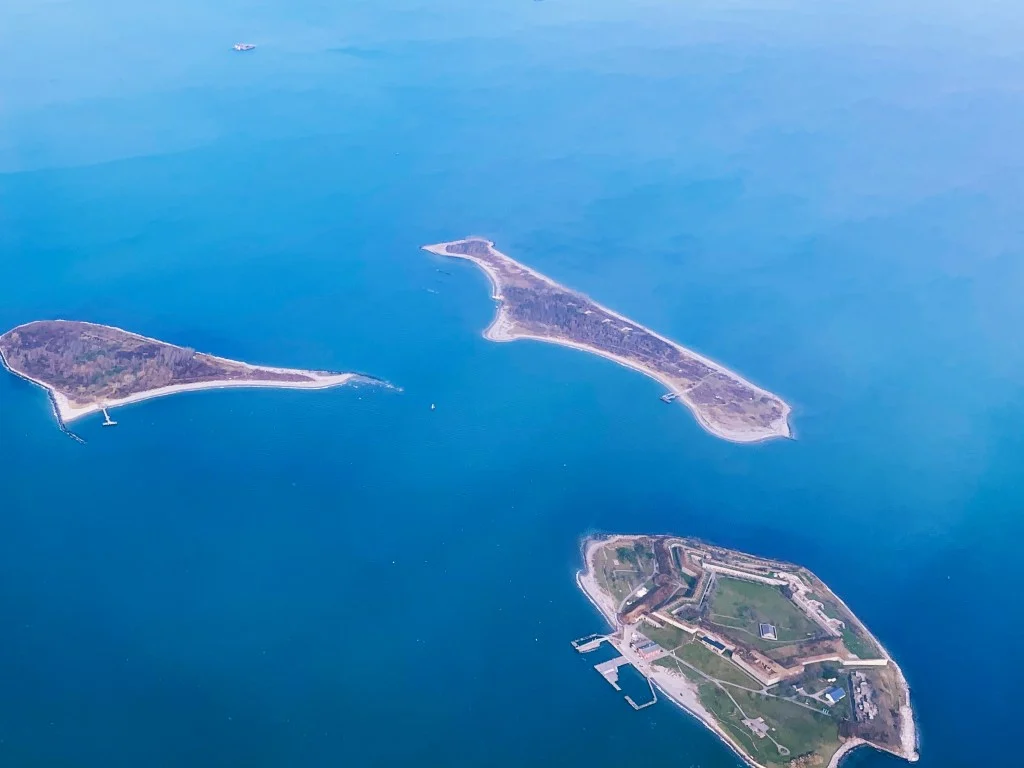
#11 Tettegouche State Park – Silver Bay, Minnesota
About the Park: Tettegoucme began as a logging camp but ended up with a family taking care of the land. They worked with the Nature Conservancy to transfer the land, and the property became a state park in 1979. Today, visitors come for the waterfalls, peregrine falcons, hiking, rock climbing, and cross-country skiing.
Anyone wanting to stay the night can stay in a variety of campsites. There are drive-in, walk-on, cart-in, group, backpack, and RV sites. Campers have access to bathhouses and vault toilets depending on where they stay.
What Makes It Unique: Hiking along cliff walls above Lake Superior! You can look out onto the lake and see for miles from that height. And, you can sit back and watch climbers as they scale the cliffs or give it a try yourself.
How to Get There: You can drive! It’s 63 miles north of Duluth International Airport.
5702 MN-61, Silver Bay, MN 55614
#12 Lake Vermilion-Soudan Underground Mine State Park – Soudan, Minnesota
About the Park: This unique park started as a mining location as early as 4,000 BC and became a state park in 1963. Visitors can explore the historic site and geological formations. There is also birding, hiking, fishing, boating, and snowmobiling.
Overnight guests can choose from camper cabins or campsites. The eight cabins have furniture, a food prep area, a fire ring, electricity, and heat. It does not have indoor plumbing, though. There is a bathhouse and drinking water nearby. Those choosing to camp can either come with a tent or an RV. The campground has a variety of sites and utilities.
What Makes It Unique: There’s an underground mine! This was Minnesota’s first iron ore mine, and you can travel ½ mile underground and take a tour. If heading underground isn’t for you, take the self-guided audio tour of the mining operations.
How to Get There: You can drive to the park. Make sure to follow the street signs because the GPS will get you lost.
Summer mine entrance: 1302 McKinley Park Road, Soudan, MN 55782
Winter mine entrance: 1379 Stuntz Bay Road, Soudan, MN 55782
#13 Makoshika State Park – Glendive, Montana
About the Park:
Makoshika is Montana’s largest state park with 11,000+ acres. The name is based on a Lakota phrase meaning ‘bad land’ or ‘bad earth.’ Park-goers can enjoy hiking, disc golf, and mountain biking. If you prefer to stay in your vehicle, you can take a scenic drive.
Campers are welcome at the 28 RV and tent campsites here. Sites have no hookups, but offer vault toilets, fire rings, and picnic tables. Fresh water is available within the campground.
What Makes It Unique: Dinosaur fossils! Head over to the visitor center and check out the Triceratops and T-Rex fossils. Scientists have discovered more than ten different species here. You can also see the K-T boundary line. It’s the boundary between the Cretaceous (K) and Tertiary (T) periods.
How to Get There: You can drive there. The park is about 220 miles northeast of Billings along I-94.
1301 Snyder Avenue, Glendive, MT 59330
GPS: 47.08972 -104.70633
#14 Letchworth State Park – Castile, New York
About the Park: Letchworth is an all-seasons state park with 66 miles of hiking trails. It has been designated as a Bird Conservation Area, making it an excellent place for birding. Visitors can also enjoy horseback riding, biking, and snowmobiling.
Overnight guests can choose between an inn, lodge, cabins, and camping. The tent and RV campground has a bathhouse, dump station, water spigots, and a whopping 270 campsites. Each site has electricity, a picnic table, and a wood-burning stove.
What Makes It Unique: Letchworth State Park has 20 waterfalls! Some of them are 600 feet tall in places. The Upper, Middle, and Lower Falls are the largest ones. On the other hand, if you decide to visit during the winter, you can go on a sleigh ride!
How to Get There: The park is 35 miles south of Rochester and 50 miles southeast of Buffalo.
1 Letchworth State Park, Castile, NY 14427
GPS: 42.685, -77.95944
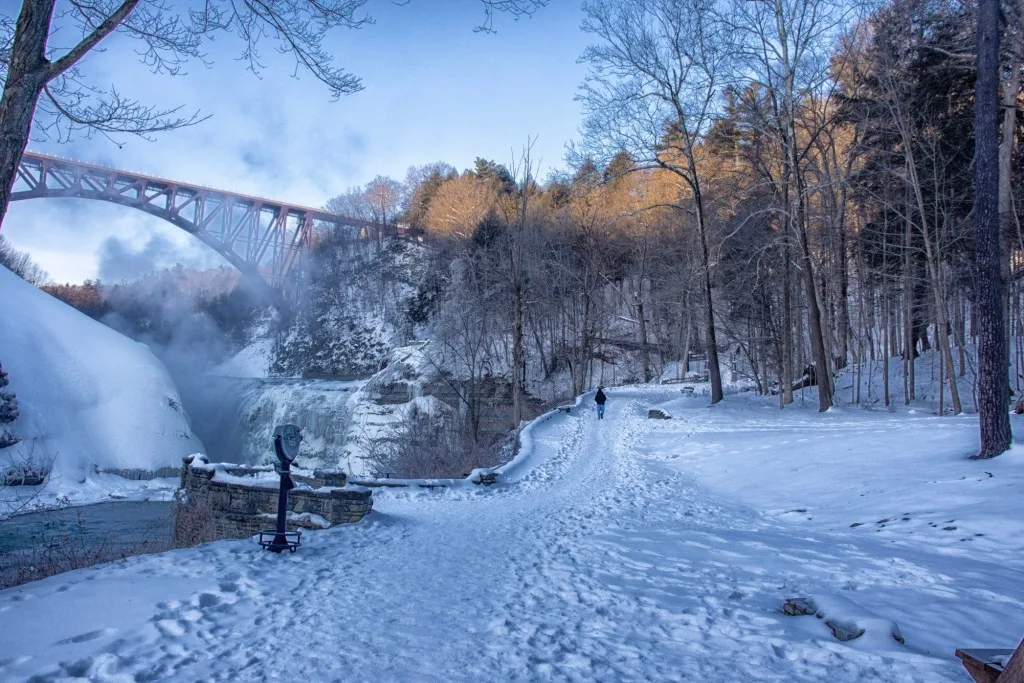
#15 Niagara Falls State Park – Niagara Falls, New York
About the Park: Niagra Falls is America’s oldest state park (1885.) The park contains various islands, and you can explore all of them. During your visit, check out the discovery center and aquarium. Onsite restaurants are available if you get hungry, so you don’t have to leave the park.
If you want to extend your stay beyond one day, you’ll need to seek accommodations outside the park. The good news is that there are plenty of places to choose from.
What Makes It Unique: The falls, of course! They are massive, measuring 180 feet tall and 1,100 feet long. You can see the falls from overlooks, the Cave of the Winds, or the water. Water flows over Niagara Falls at 3,160 tons every second, producing over 4 million kilowatts of electricity.
How to Get There: You can drive there. The best address for your navigation app is 24 Buffalo Avenue, Niagara Falls, NY, 14303.
GPS: Latitude 43.081528 Longitude 79.064240
#16 Adirondak Park – Northville, New York
About the Park: Adirondack Park is a collection of waterfalls, hidden lakes, small towns, and villages. The area has 46 high mountain peaks ranging from 3,800+ feet to 5,300+ feet.
The Adirondacks have thousands of campsites and hundreds of campgrounds. There’s even island camping and glamping. If you prefer to skip the tent and RV, the area also has a variety of resorts, lodges, and bed & breakfast places.
What Makes It Unique: It’s enormous! Adirondack Park is a six-million-acre park, 2.6 million acres belonging to the state park. It’s a sprawling outdoor wonderland with thousands of miles of scenic trails, forested paths, waterfalls, and summit views. The park also has many accessible trails.
How to Get There: You can get to the park via car, bus, train and scenic byways. There are many entrances to the Adirondacks, so there isn’t an exact address. Our best recommendation is to select a specific region within the park and use a GPS app to take you there.
#17 Alabaster Caverns State Park – Freedom, Oklahoma
About the Park: Alabaster Caverns is a 200-acre park that became a state park in 1956. Hikers can check out the Cedar Canyon Trail System with easy and moderate trails.
The park has reservable RV sites and first-come, first-served tent sites. Potable water is available, and group shelters have electricity and grills. RVers can dump their tanks at the onsite dump station.
What Makes It Unique: The state park has one of the largest alabaster caves in the world and is the only gypsum (alabaster) show cave in the US. The park offers daily cavern tours, but you can also do wild caving (aka spelunking) with a permit.
People have found several types of alabaster in the park: pink, white, and the rare black alabaster. So look for it. And don’t panic if you see a bat; the caves are their home.
How to Get There: You can drive there. It’s six miles south of Freedom and 20 miles north of Mooreland.
217036 SH 50A, Freedom, OK 73842.
#18 Fall Creek Falls State Park – Spencer, Tennessee
About the Park: It’s one of Tennessee’s largest and most visited state parks. Fall Creek Falls consists of almost 30,000 acres of rugged Cumberland Plateau, gorges, waterfalls, and streams. The park’s namesake falls are 256 feet tall and, there are more waterfalls throughout the park.
Overnight visitors can stay in a cabin or at a campsite. Several campgrounds offer a total of 222 campsites, all with different hookups and utilities. Campers can bring their RVs.
What Makes It Unique: There’s an 18-hole golf course! The course is one of the best in Tennessee, complete with a pro shop, supplies, lessons, rentals, and carts. This state park also has an Olympic-sized pool with a wading area, so pack your swimsuit.
How to Get There: You can drive to Fall Creek Falls. The park is 79 miles from Nashville off of TN-284.
2009 Village Camp Rd, Spencer, TN 38585
GPS: 35.655, -85.356

#19 Brazos Bend State Park – Needville, Texas
About the Park: This Texas state park is a former hunting rank with 5,000 acres. Brazos Bend has 37 miles of trails and space for hiking, biking, picnicking, fishing, and horseback riding. The park has wetlands, forests, and tall grass prairies.
RVers and tent campers can stay within the park. All campsites have picnic tables, fire rings, grills, and access to a bathhouse. Electricity is available for some sites.
What Makes It Unique: The George Observatory! This is where you go for stargazing and participating in special astronomer-led presentations. You can bring your binoculars and telescopes too. Some fun events include astronomy day, rocket day (mini launch rockets), and family space day.
How to Get There: You can easily drive to Brazos SP. It’s about an hour southwest of downtown Houston.
21901 FM 762, Needville, TX 77461
#20 Goblin Valley State Park – Green Valley, Utah
About the Park: Goblin Valley became a state park in 1964 and is full of geological history. The entire area looks like the Martian landscape. Hikers with varying abilities can explore the area. If you’re lucky, you might see jackrabbits, scorpions, kangaroo rats, pronghorn, kit foxes, rattlesnakes, or coyotes.
Technically, there are no overnight facilities in the park. However, just outside the borders of Goblin Valley, there are 25 campsites and a few yurts. There are zero hookups, but every site has a picnic table, fire ring, and shade shelter. The campground also has a dump station, restrooms, and showers.
What Makes It Unique: The goblin-looking hoodoos! Arthur Chaffin thought the hoodoos looked like goblins, and that’s how the park got its name. The valley has thousands of them, and you can freely explore the area during your visit. The uneven erosion of sandstone causes hoodoos.
How to Get There: You can drive! It’s 100 miles west of Moab and off of UT-24. Note that the correct route to the park is fully paved. If your GPS directs you onto a dirt road, it’s not the correct route.
18630 Goblin Valley Road, Green River, UT 84525
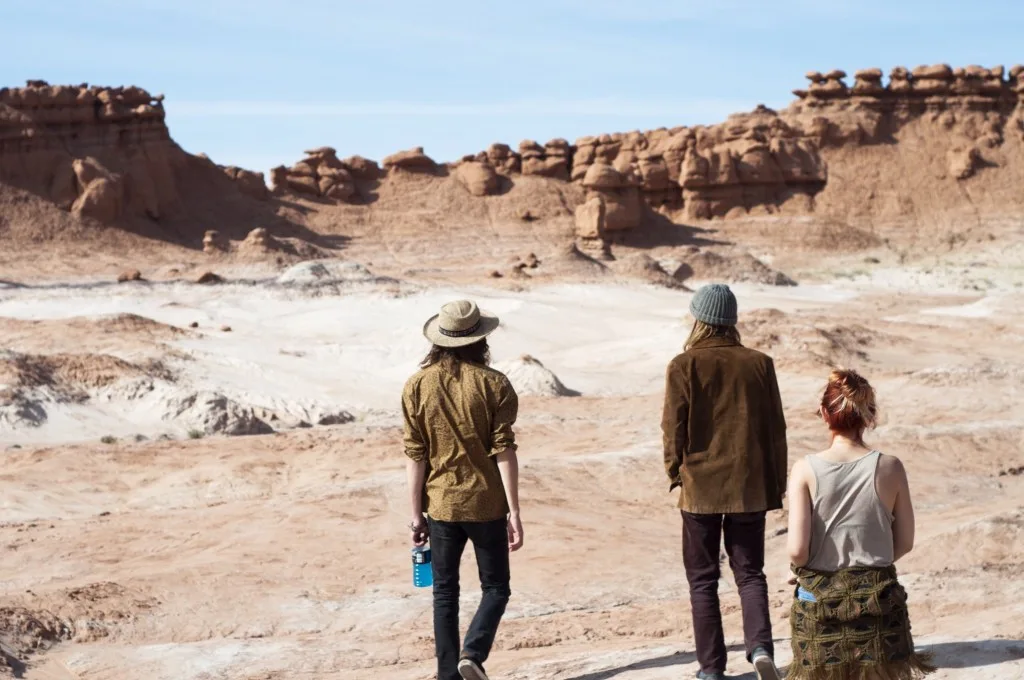
#21 Natural Tunnel State Park – Duffield, Virginia
About the Park: This Wilderness Road historic area opened to the public in 1971. The 909-acre park has picnic areas, hiking trails, and a boardwalk. Make sure to pack your swimwear so you can enjoy the swimming pool and its 100-foot slide.
If you want to stay the night, there are a variety of accommodations. Cabins, a lodge, camping, yurts, and the Cove Ridge Center that can sleep 48 are all good options. The park has two campgrounds with electricity, water, bathhouses, campfire-ring grills, and picnic tables.
What Makes It Unique: The tunnel! It’s a naturally carved limestone cave measuring 580 feet long and ten stories high. William Jennings Bryan even called it the “Eighth Wonder of the World.” Trains still use the tunnel to get through the Appalachian Mountains.
How to Get There: You can drive there. The park is approximately 13 miles north of Gate City and 20 miles north of Kingsport, Tennessee.
1420 Natural Tunnel Pkwy, Duffield, VA 24244
#22 Peninsula State Park – Fish Creek, Wisconsin
About the Park: Peninsula State Park is 3,700 acres and eight miles of Green Bay shoreline that offers outdoor fun throughout the year. Visitors can go biking, boating, paddling, fishing, golfing, hiking, swimming, snowshoeing, sledding, and cross-country skiing.
The park has several different campgrounds with 468 campsites. Utilities and amenities around the campgrounds vary by location.
What Makes It Unique: The ancient sea caves! These caves dot the park’s 150-foot cliffs. Eagle Cave is one of them, and measures 41 feet long and 6 to 10 feet high. The cliffs are part of the Niagara escarpment.
How to Get There: You can drive! Peninsula State Park is around 70 miles north of Green Bay.
9462 Shore Rd., Fish Creek, WI 54212
Unique State Parks Are Abundant in the US
These state parks offer such a unique experience that we had to tell you about them. There are certainly many more, but we had to stop somewhere! How many have you just added to your travel list? Did we miss any that you think belong on the list?
Discover the Best Free Camping Across the USA
To be honest with you, we hate paying for camping. There are so many free campsites in America (with complete privacy).
You should give it a try!
As a matter of fact, these free campsites are yours. Every time you pay federal taxes, you’re contributing to these lands.
Become a FREE CAMPING INSIDER and join the 100,000 campers who love to score the best site!
We’ll send you the 50 Best Free Campsites in the USA (one per state). Access the list by submitting your email below: